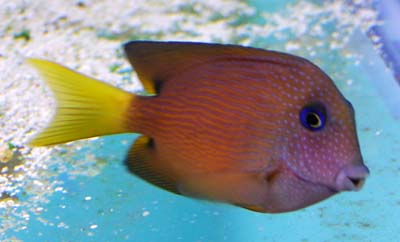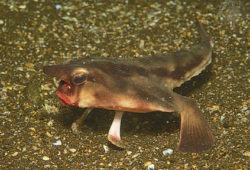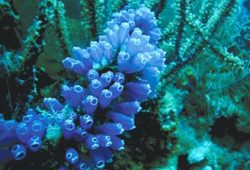Blue Eye Tang in a Tropical Saltwater Aquarium
The article gives a detailed analysis of Blue Eye Tang in a Tropical Saltwater Aquarium.

Contents
A Fantastic Algae-Eating Marine Fish for a Community Reef Aquarium
The blue eye tang (Ctenochaetus binotatus) is a fantastic addition to many community tropical marine aquaria. This fish does well in both tropical fish-only systems and tropical reef tanks so long as the aquarist makes the effort to meet the husbandry needs of this beautiful marine animal. Perhaps best of all for many aquarists, it is a fantastic algae-eating fish.
Biological Algae Control in the Wild and in the Tropical Saltwater Aquarium
The blue eye tang is sometimes called the two-spot surgeonfish or the two-spot bristletooth. It is a reef-associated, Indo-Pacific fish. In its native range, it frequently inhabits deep lagoons and seaward reefs and feeds on detritus and algae in rubble zones. The blue eye tang, like other closely related tangs, eats by scraping algae off of the substrate using its specialized bristle-like teeth. The blue eye tang may grow to 22 cm in length.
Blue Eye Tang Husbandry
Caring for a blue eye tang is relatively undemanding so long as the proper environment is provided. The proper environment for a blue eye tang is a mature aquarium of at least 75 gallons with lots of live rock. The blue eye tang will appreciate a mix of open swimming space and caves and crevices in which to retreat. The tank should be at least six months old with enough algae covering the live rock so that the blue eye tang can easily forage. In a newer tank, or in a tank without sufficient algae growth, algae-covered rocks may be introduced to the tank every few days.
Good Tankmates for a Blue Eye Tang
While the blue eye tang is generally considered a peaceful or semi-aggressive fish, it should not be housed with members of its own species. It may, however, be kept with other tang species so long as those species are not too similar in size, shape and color. The blue eye tang will do best in a peaceful community tank, and because it generally leaves coral polyps alone, it is a fantastic fish for a reef aquarium.
Feeding a Blue Eye Tang
In terms of feeding a blue eye tang, it is, as mentioned above, imperative to insure the fish has enough algae on which to forage. The diet of the blue eye tang should also be supplemented with a commercially-prepared marine food formulated especially for herbivores. Blue tangs will also readily accept fresh bits of meaty seafood such as brine shrimp, mysids or pieces of raw table seafood. Consider soaking these in a vitamin supplement like Selcon before feeding. As mentioned above, a “feeder rock” is also a good idea if algae coverage is not sufficient in the aquarium.
Acclimating a Blue Eye Tang
It is most important to get a new blue eye tang to feed quickly during the acclimation process. The blue eye tang, like the vast majority of saltwater marine aquarium fishes, should be quarantined before being added to the main tank. During quarantine, offer small pieces of rock rubble with plenty of algae growth to the blue eye tang. Offering vitamin soaked carnivorous foods is also advisable.
A Fantastic Saltwater Aquarium Fish
Overall the blue eye tang is a good choice for many saltwater aquarists looking for an attractive reef-compatible, algae-grazing fish. With the proper husbandry, it is an undemanding fish that will add beauty and interest to the tropical saltwater aquarium.



